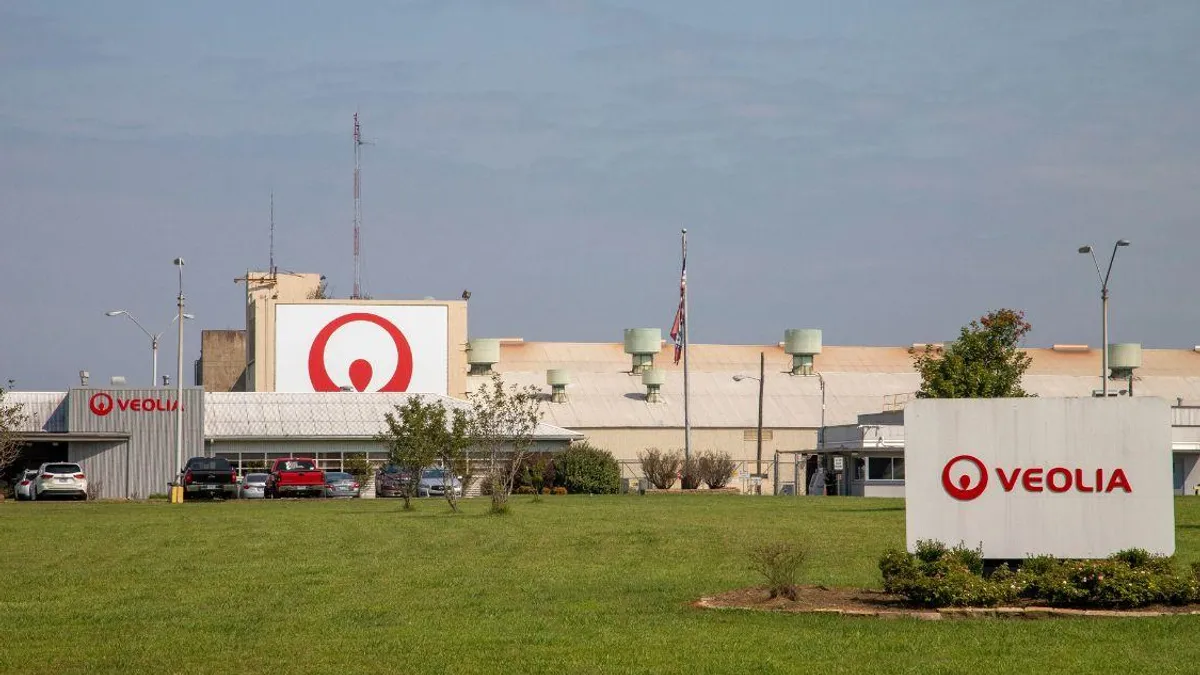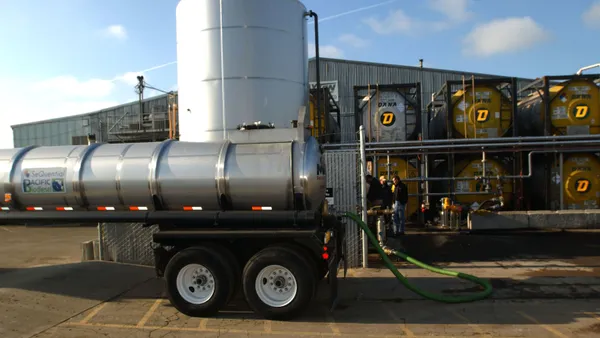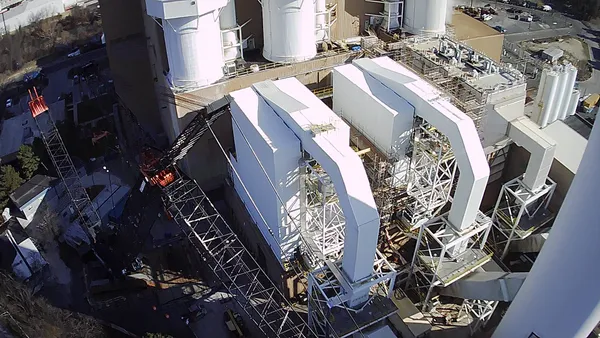Dive Brief:
- Clean Earth, a division of Enviri, has signed a five-year agreement with Veolia North America that guarantees access to capacity at the latter’s upcoming hazardous waste incinerator in Gum Springs, Arkansas.
- The estimated $300 million facility is set to open by early 2025, with 100,000 tons per year of permitted capacity. The agreement also allows Clean Earth increased access to capacity at Veolia’s network of six U.S. incineration facilities in Arkansas, Illinois and Texas this year.
- “Demand is growing across the U.S. for the safe, sustainable management of complex waste streams from the resurgent growth of research and manufacturing in North America,” said VNA President and CEO Fred Van Heems in a statement. “This agreement provides a solution for the gap in the industry.”
Dive Insight:
Hazardous waste disposal capacity has been constrained in the U.S., due in part to growing volumes from the reshoring of manufacturing operations that had shifted overseas in prior decades.
Enviri (formerly known as Harsco) acquired Clean Earth in 2019, which was later complemented by the purchase of certain Stericycle assets. The Clean Earth business has seen growth opportunities since then, touting a business model that is focused on hazardous waste recovery since it does not own disposal assets.
At the same time, limited access to disposal has been a constraint. Going back to at least 2022, Enviri CEO Nicholas Grasberger said “severely limited” incineration capacity was affecting revenue opportunities. Though in November he said those pressures had begun to ease.
“This unique agreement solves some of the constraints that have challenged the industry in the past several years,” said Clean Earth President Jeff Beswick in a statement.
Bob Cappadona, CEO of VNA’s environmental solutions division, said the two companies negotiated what they described as a “first-of-its-kind” hazardous waste capacity agreement for about a year. While such agreements may be more common among competitors in the MSW sector, Cappadona said the nature of hazardous waste streams made this more complex.
“The difference in the hazardous waste industry is every single day we're managing a different portfolio of waste streams into our facility and as a result the level of hazard associated with those materials differs, the pricing that's associated with it is different. It could be gas, liquid, or solid,” he said.
Previously, companies had been more willing to operate in the spot market for disposal and find short-term options, but Cappadona said that is beginning to change as capacity limitations have led some — including Veolia — to decline work in certain cases.
Cappadona said Veolia plans to dedicate 50% of capacity at the new facility to its own needs, leaving the rest for outside customers. He declined to share specific volume expectations from the Clean Earth agreement, but said there would still be room for more.
“On day one, we want to make sure that we've got the volume to support the investment that we're making,” he said, adding that it’s mutually beneficial because “they can operate as if they own that capacity in the incinerator.”
Veolia acquired the Gum Springs site from aluminum company Alcoa in 2020, a $250 million transaction, after previously establishing a relationship to utilize capacity. This included two incinerators, which primarily processed spent pot liner from aluminum production, as well as a hazardous waste landfill that Veolia has invested in further. The incinerators had permitted capacity for about 300,000 tons per year, but were not operating at that level. The transaction also allowed Alcoa to continue using the site for its waste, but Cappadona said “that volume is a small percentage at this point of what's managed through the facility.”
The new project, which broke ground in 2022, will replace those 50-year-old incinerators. Cappadona said “the newer facility is designed for a much wider spectrum of waste materials,” while also providing environmental benefits due to enhanced emissions control technology.
Last fall, VNA also broke ground on a 5 MW solar project that will cover the facility’s energy needs. The facility will capture waste thermal heat, and VNA plans to “reforest nearly 1,500 acres surrounding the property.” Veolia said the project will also increase local job opportunities, ramping up to over 200 employees from 61 at the time of the acquisition.
While VNA is focused on repurposing or recovering hazardous materials — for example, redirecting solvent from the pharmaceutical industry to applications in the paint industry — Cappadona noted that disposal capacity will still be needed.
Clean Harbors is also building its own $180 million hazardous waste incinerator in Nebraska, set to come online later this year, after completing another $120 million project in Arkansas in 2017. In addition to reshoring, the company has also called out the closure of captive incinerators as another factor affecting capacity.
During the company’s Q3 earnings call, co-CEO Eric Gerstenberg said “overall industry capacity continues to be very challenged” and that capacity “will continue to be tight in the years to come” even when both new facilities are open.
Cappadona agreed with that assessment, and noted the potential for further market shifts to come.
“We're creating capacity that's going to be necessary in the next five years,” he said, adding that upcoming regulation of PFAS as a hazardous material could also be a factor. “It would have a significant impact to the supply demand curve in our industry, and that is certainly something that we're watching as well.”















